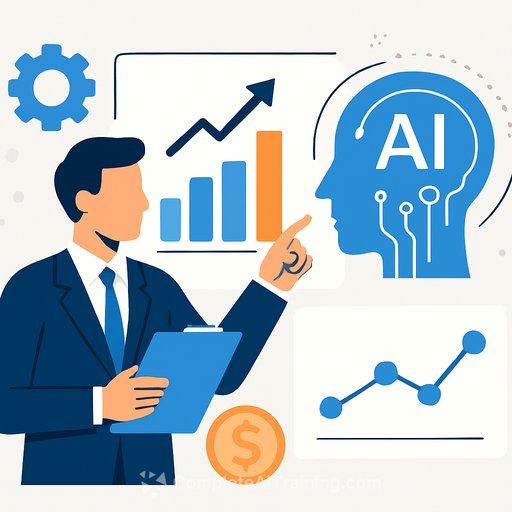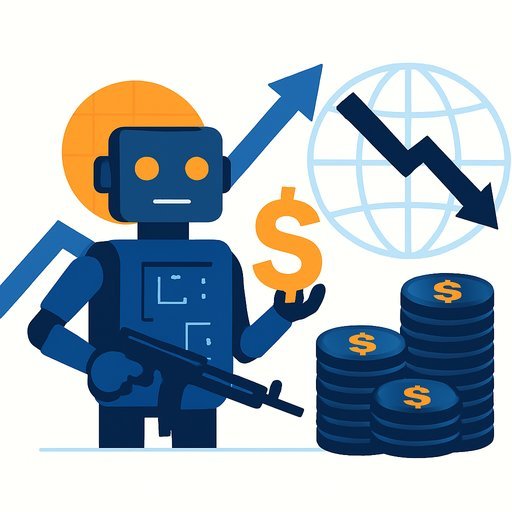AI is transforming finance-when strategy leads
AI is changing how finance works, but results only show up when CFOs anchor it to strategy. Leaders at a recent CFO-focused event shared a clear pattern: define the outcome first-efficiency, control, effectiveness, or engagement-then choose use cases that move those metrics. Teams that deploy AI one use case at a time, without a broader plan, are struggling to create enterprise value.
Agentic AI platforms are on the radar for productivity and analysis. But they aren't magic. Without training, people treat them like a search bar and get shallow output. Expect 6-12 months for meaningful implementations. Start with simple tools to build comfort, and stand up governance and compliance alongside them.
The four outcomes that guide AI in finance
- Efficiency: Shorten close cycles, reduce manual work, and cut cost to serve.
- Control: Improve policy adherence, audit readiness, and explainability.
- Effectiveness: Better forecasting accuracy, sharper variance insights, higher-quality decisions.
- Engagement: Self-serve insights for the business, faster answers to routine questions.
Pick one primary outcome. Set 2-3 measurable KPIs. Then back into scope, data needs, and tools.
What leading CFOs are doing right now
Webflow: automate the repetitive, unlock self-serve insights
Webflow's finance team used to field routine policy questions. Large language model apps now handle those inquiries, freeing the team for higher-value work. They also deployed chat-based access to data so non-technical analysts can use natural language to explore metrics and trends.
To drive consistency, leadership set clear expectations for AI usage and partnered with HR to tie it into performance reviews. Culture and accountability matter as much as the tech.
INRIX: scale analysis, raise forecast accuracy
INRIX processes mobility data at massive scale-more than 50 petabytes and 45 billion daily data points. AI helps clients extract actionable insights from that volume. Inside finance, AI has improved reporting and forecasting accuracy, including ARR, reaching up to 95% with greater transparency and fewer manual inputs.
Expect these capabilities to expand as enterprise platforms embed AI natively. For example, see how Workday integrates AI and ML across finance and HR workflows.
Greenlight: better risk, faster ops, smarter content
Greenlight uses AI to strengthen risk management by analyzing transaction data, automate contract reviews, and power educational content inside the product. They also run internal hackathons to build hands-on skill and break down silos. Curiosity plus structure beats passive learning.
What doesn't work (and how to course-correct)
Not every use case hits on the first try. Early attempts to treat ChatGPT like a junior analyst underperformed-especially on math-heavy tasks. Automating variance analysis also produced inconsistent results at first. Iteration, testing, and tighter prompts improved reliability and impact.
The takeaway: keep human oversight. If a pilot fails, don't stop-refine. Early adopters are already seeing "green shoots" of ROI.
Buy vs. build, ROI, and where to start
CFOs consistently ask three questions: What's the ROI? Where do we begin? Buy or build? The best answers start with outcomes and data readiness, then evaluate platform fit, internal capabilities, and governance requirements. Buy for speed and integration; build for differentiation where your data and workflows create unique advantage.
A 90-day plan you can run
- Weeks 1-2: Choose one outcome (efficiency, control, effectiveness, or engagement). Define KPIs and guardrails. Inventory finance processes and data sources.
- Weeks 3-6: Select 2-3 quick wins (e.g., policy Q&A, spend inquiries, budget variance summaries). Stand up governance: data access, PII handling, human-in-the-loop, approval workflows.
- Weeks 7-10: Pilot an agentic AI workspace with 10 power users. Train on prompting, verification, and exception handling. Integrate with your data warehouse and planning tools.
- Weeks 11-12: Measure impact vs. baseline. Decide expand, pivot, or sunset. Document what's repeatable and codify into SOPs.
Metrics that actually signal value
- Close-cycle time and manual hours saved
- Forecast accuracy (e.g., ARR, cash, revenue) and variance explainability
- Percentage of finance inquiries automated and time to resolution
- User adoption, retention, and model confidence thresholds
- Policy compliance and audit exceptions
- Cost to serve per transaction or report
Build capability, not just tools
AI returns compound when skills compound. Train your team on prompting, data literacy, and controls-then tie usage to performance and incentives. If you need a structured path by role, explore curated programs for finance leaders here: Complete AI Training: Courses by Job.
Bottom line for CFOs
- Lead with strategy and measurable outcomes.
- Start with narrow, high-frequency use cases to earn quick wins.
- Treat agentic AI like a system-train people, govern access, verify outputs.
- Iterate fast. Keep humans in the loop. Scale what proves value.
Your membership also unlocks:






